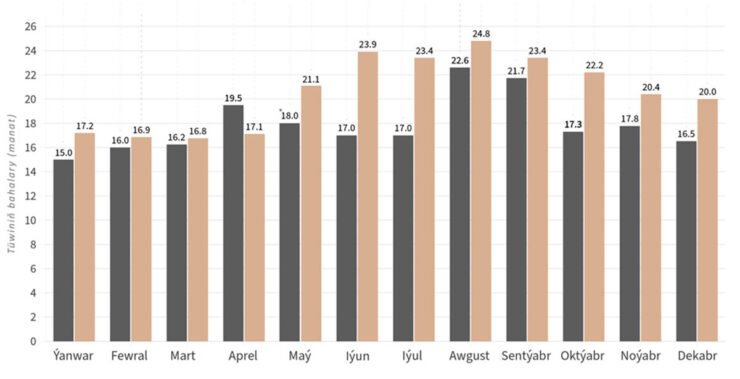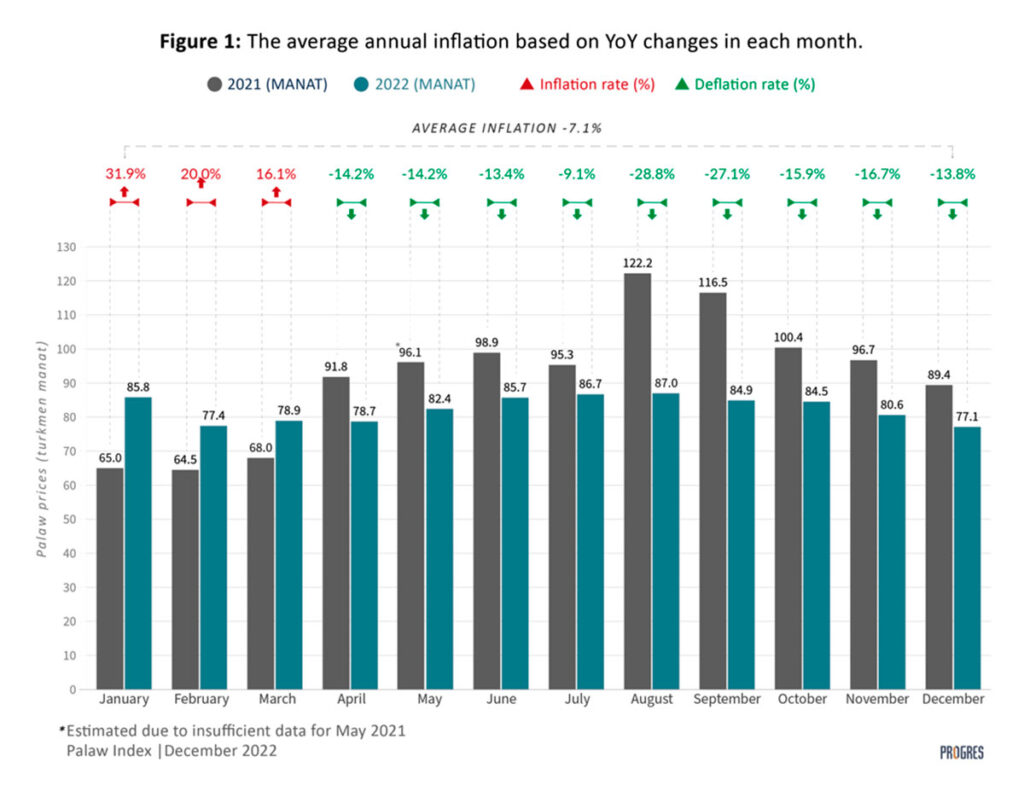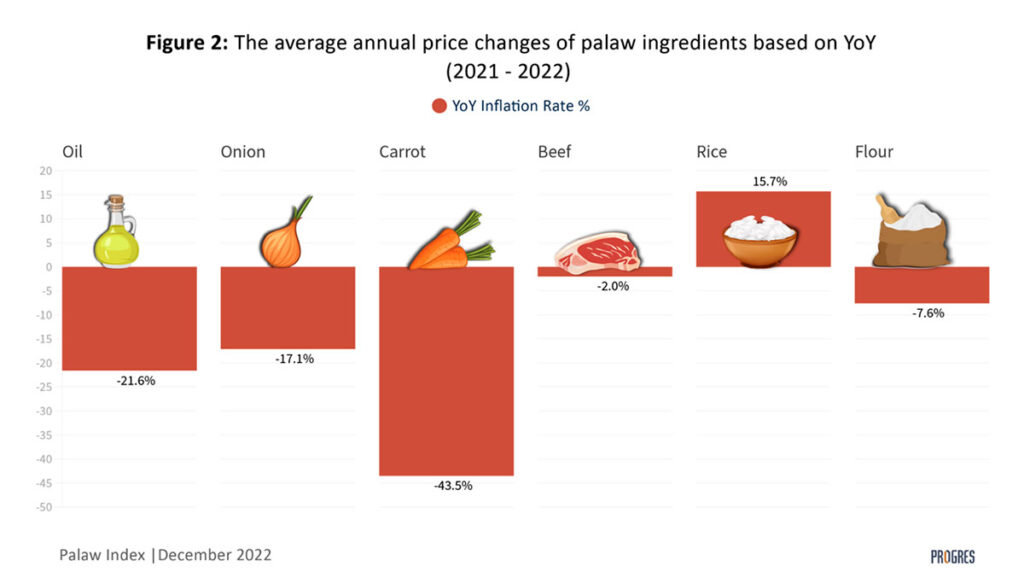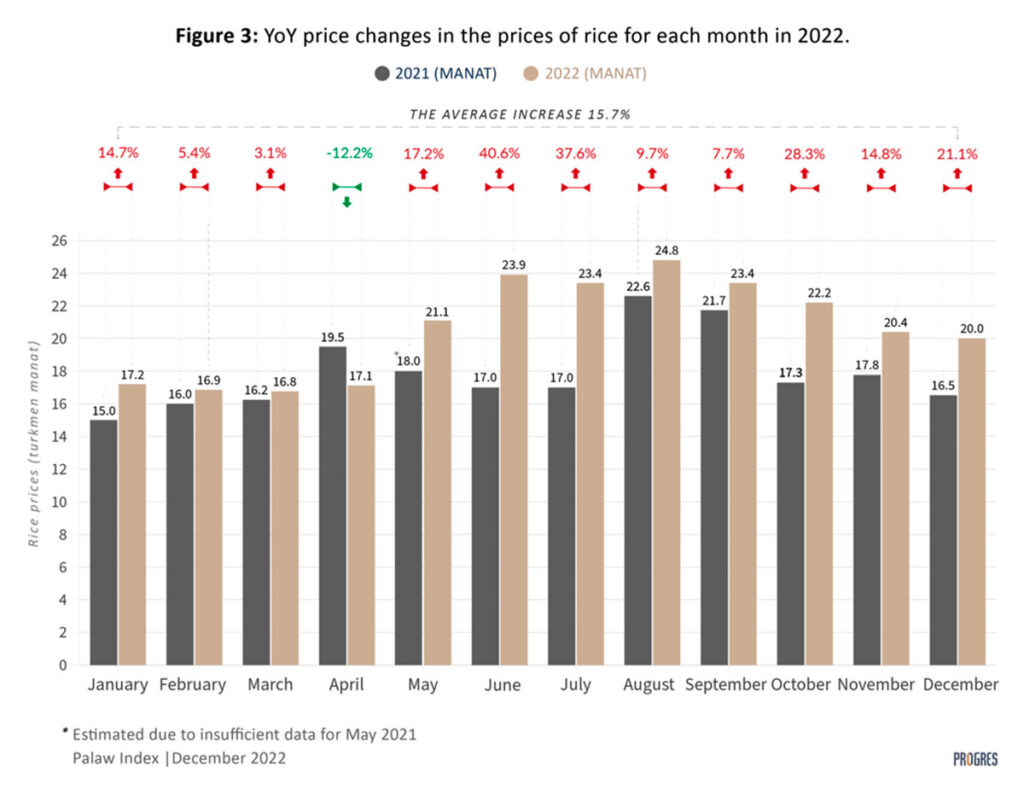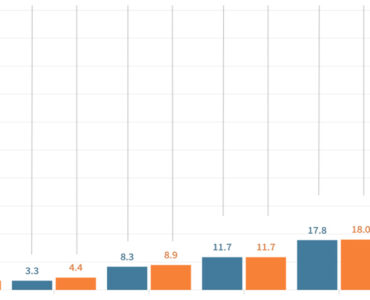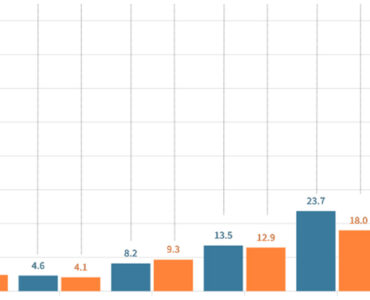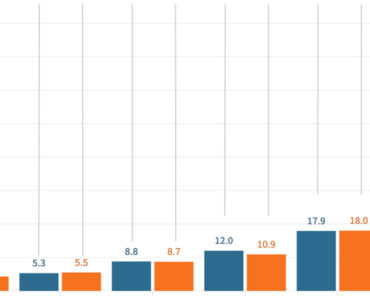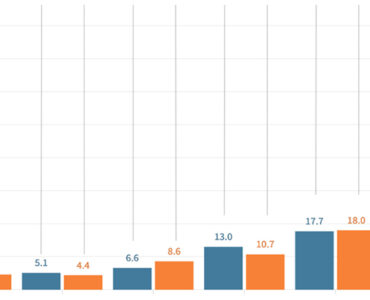The average cost of cooking palaw in Ashgabat was 77.1 Turkmen manat in December 2022, which is -4.4% lower month-on-month (MoM) compared to the prices observed in November 2022 (80.6 manat) and 13.8% cheaper year-on-year (YoY) compared to the similar period last year in December 2021 (89.4 manat).
Palaw Index decreased on average by 7.1% in 2022 based on the average YoY inflation rates of all 12 months. To compare, palaw prices on average increased by 55.6% in 2021 YoY. See Figure 1 to learn more about the YoY inflation for each month from January 2022 to December 2022.
Looking at the numbers, we can observe that PI prices saw a significant increase at the beginning of 2022, then it had a steep decline in the second half of the year starting in April. The decline was continuous and occurred for 9 months in a row between April and December 2022, declining as much as by 28.8% in August 2022. The reasons for price changes of palaw ingredients vary from one product to another. Based on our monthly reports, the biggest driver of price changes was the value of USD in the black-market exchange rate. The average annual black market exchange rate decreased from 28.9 manat in 2021 to 19.3 manat in 2022, which is 33.2% decline.
Then why PI prices declined only by 7.1% in 2022?
The impact of black-market rates differs from one product to another and whether they are imported or produced at home. As imported goods are bought in foreign currencies, their prices are directly impacted by the changes in the value of the black-market exchange rate. Among the ingredients in Palaw Index, sunflower oil (from Russia) and wheat flour (from Kazakhstan) are mostly imported from abroad. In Palaw Index, prices of sunflower oil dropped on average by 21.6% and wheat flour declined by 7.6% in 2022 YoY. Although we can notice that the black-market rate dropped at a higher level (-33.2%) than price changes in oil and flour, prices of those products went up in Russia and Kazakhstan, which exports those products to Turkmenistan. For instance, the average price of wheat flour exported from Kazakhstan to Turkmenistan increased by 17.3% in the first eight months of 2022 compared to a similar period a year earlier.
According to the FAO Food Price Index, which measures the price changes in international food prices, the average food prices rose 14.3% in 2022 compared to a similar period of time in 2021.
Among the ingredients of Palaw Index, rice and beef are largely domestically produced, while carrots and onions are both produced at home and imported from abroad. Locally produced goods are partly or indirectly impacted by the changes in the value of the black market exchange rate. Most equipment and machinery used in production are imported from abroad in foreign currencies as well as some raw materials and inputs necessary for production. Therefore, even though the product is produced at home, its price is still impacted by the value of the black-market exchange rate.
Impact of COVID-19 restrictions
The easing of COVID-19 restrictions has also played a role in price changes of some products imported from abroad. For instance, since the beginning of the COVID-19 pandemic in early 2020, Turkmenistan closed its land and air borders with other countries and this negatively impacted the imports coming from other countries. It especially had an impact on the cargo trucks carrying goods into Turkmenistan from neighboring Iran. The majority of imported vegetables and fruits in Turkmenistan come from Iran.
Donate to support Turkmen analysts, researchers and writers to produce factual, constructive and progressive content in their efforts to educate the public of Turkmenistan.
SUPPORT OUR WORKTurkmenistan reopened its border crossings for Iranian commercial cargo trucks only in October 2021 after 20 months of closure with conditions that only Turkmen drivers will carry the goods through Turkmenistan. The last restrictions related to commercial cargo were lifted by November 2022. Thus, the ease of restrictions in carrying goods into the country from abroad in 2022 resulted in higher imports, which might have contributed to the price decline of certain goods. This is evident by 35.6% rise in Iranian exports to Turkmenistan in the first eight months of the Iranian calendar year (21 March – 21 November 2022) compared to a similar period of time in 2021 (Business Turkmenistan).
Individual ingredients
We calculated the average YoY price changes of individual ingredients for the year of 2022. Prices of carrots dropped (-43.5%), sunflower oil (-21.6%), onions (-17.1%), wheat flour (-7.6%), and beef (-2.0%). Rice prices are up 15.7% in 2022 compared to the prices observed in 2021. See Figure 2 for more info.
Rice was the only product, which saw a price increase throughout 2022 against the decreasing trend in other products. Since April 2022, prices of all palaw ingredients have been declining until the end of the year except for rice. Rice prices dropped only once in 2022 and it occurred in April with by 12.2% decline YoY. In the remaining months of 2022, its price kept increasing in the range from 3% to 41% in 2022 YoY (See Figure 3).
Rice has the highest water footprint among all Palaw ingredients, and it requires about 2500 liters of water to produce 1kg of mulled rice (Water Footprint Network). Turkmenistan has been suffering from water shortages, which negatively impact agricultural output. Officially reported production of rice production amounted to 82,400 tonnes per year in 2022, which remains unchanged from the output in 2020 and 2021. However, given the lack of data transparency in the country, the real numbers of rice production might be different in 2022 due to the problems with water shortages. Low production of rice translates to lower supply against the local demand, which usually results in higher prices.
Methodology
Prices of ingredients in the Palaw Index are collected for 1 kg of onion, carrot, beef, rice, and flour, and 1 liter of cooking oil. To cook palaw for a family of four, we use 0.3 liters of cooking oil, 0.5 kg of onion, 1 kg of carrots, 0.6 kg of beef, 1 kg of rice, and 0.5 kg of flour in our formula. Please click here to learn more about the methodology of the Palaw Index.

